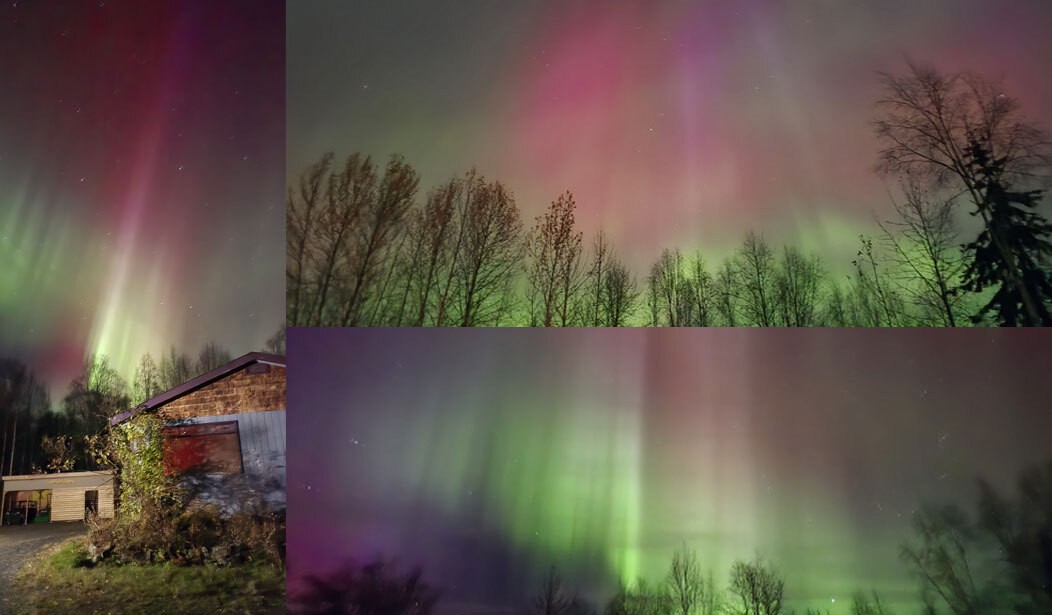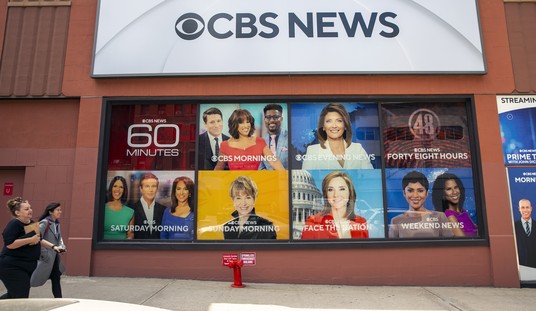This week has given us some of the greatest natural fireworks shows that nature has to offer. A solar storm has caused the aurora borealis to shine all over; I have it on very good authority that they were visible in Missouri and Arizona, and I have been told that they were visible in Texas. Here in Alaska, we're kind of used to seeing the northern lights (bring pretty northern ourselves), but normally, it's a few streams or curtains of green in the northern skies. Not this week! We saw curtains and streams of green, purple, red, and blue covering the entire sky. One night, my wife and I stood outside for half an hour, in 30-degree temps, watching the auroras whip and flicker above us. Our neighbors were doing likewise; when you have a bunch of Alaskans outside ooh-ing and ahh-ing over the auroras, you know it's something unusual.
We took a lot of pictures.
Auroras are caused, of course, by solar activity. This week's activity was caused by a series of solar storms that slammed into the upper atmosphere.
Another in a series of unusually strong solar storms hitting Earth produced stunning skies full of pinks, purples, greens and blues farther south than normal, including into parts of Germany, the United Kingdom, New England and New York City.
“It was a pretty extensive display yet again,” said Shawn Dahl, a space weather forecaster at the U.S. National Oceanic and Atmospheric Administration’s Space Weather Prediction Center. He said the center has gotten reports of northern lights sightings as far south as New Mexico. “It’s been a wonderful year.”
There were no immediate reports of disruptions to power and communications.
And here's the great bit; we may well be seeing more in the coming weeks.
Solar activity increases and decreases in a cycle that last about 11 years, astronomers say. The sun appears to be near the peak of that cycle, known as a solar maximum.
In May, the sun shot out its biggest flare in almost two decades. That came days after severe solar storms pummeled Earth and triggered auroras in unaccustomed places across the Northern Hemisphere.
There will likely be more to come. Dahl said we remain “in the grip” of the solar maximum and it isn’t likely to start to fade until early 2026.
Of course, these aren't the only storms we've been dealing with in recent days.
See Related: SEE: Ron DeSantis Drops a Reporter for Leading Question
About Hurricane Milton
The Last Thing the Southeast Needs Is Another Hurricane—but Potential
Cat 4 'Milton' Is on Its Way
I have a distinct memory of a cold, cold winter evening when I was about 13 or 14. It was at least ten below zero on that frigid northeast Iowa evening. Dad had gone out to bring in some firewood; he called my mother and me outside and pointed to the north, and there they were, some rippling curtains of pale, electric green waving. That time, the show lasted maybe twenty minutes, and then the auroras faded away.
If the auroras are coming your way, get out and watch. If you're not sure they're coming your way, you can find out here. It's one of the greatest shows nature has to offer.
For more stories just like this, as well as politics, social issues, the news of the day, and all kinds of great content, you should consider upgrading to a VIP account. VIP status will open a plethora of stories and podcasts here at RedState. We now have the Platinum level, which gives you full access to all of the Townhall Media sites as well as a catalog of feature-length videos, the Townhall store, and a lot more. Use promo code SAVEAMERICA for a 50% discount.















Join the conversation as a VIP Member